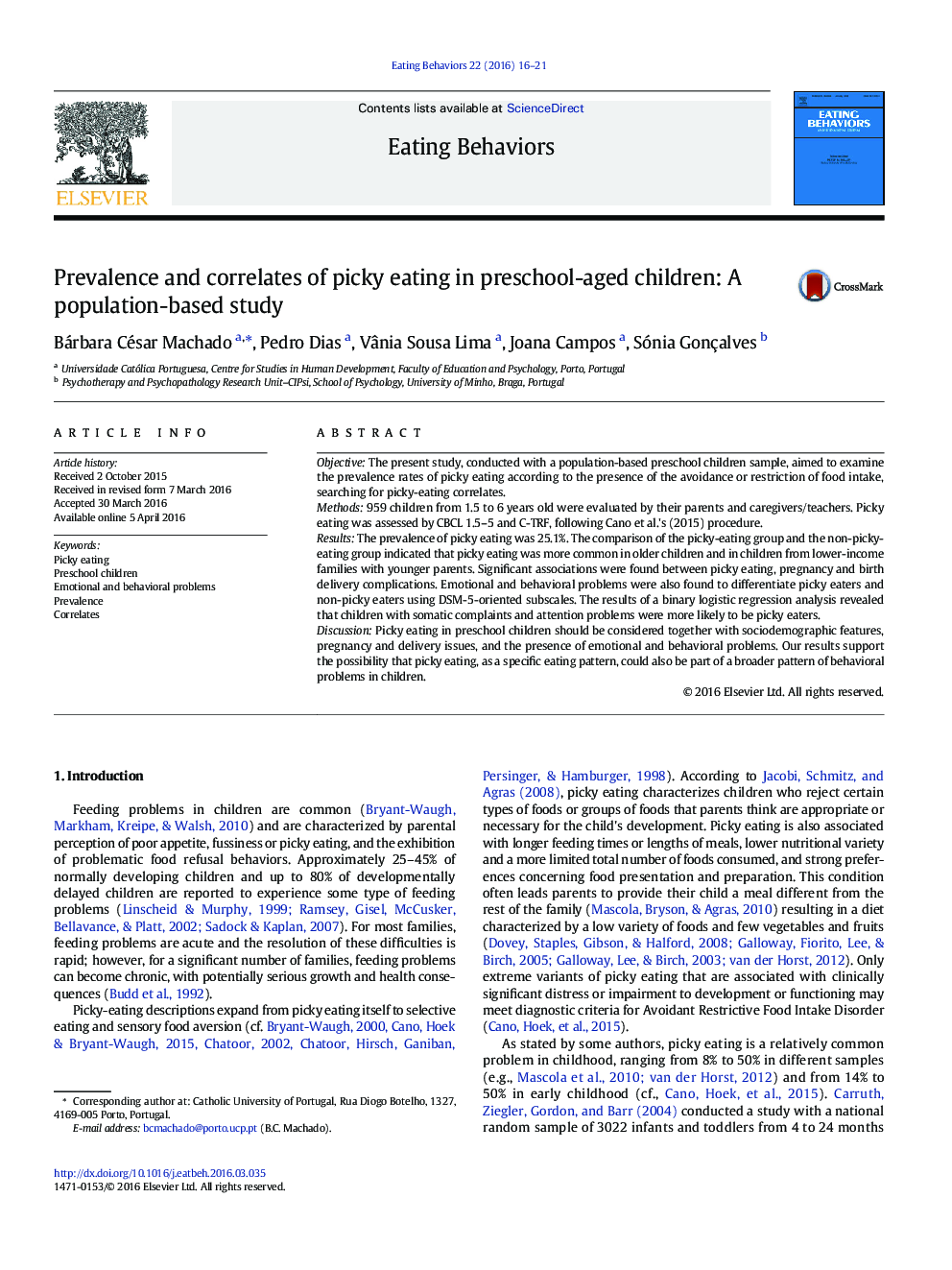| Article ID | Journal | Published Year | Pages | File Type |
|---|---|---|---|---|
| 906183 | Eating Behaviors | 2016 | 6 Pages |
•We found a picky-eating prevalence of 25.1% in children from 1.5–5 years of age.•Picky eating was more common in older children, from lower-income families with younger parents.•Picky eating was associated with pregnancy and birth delivery complications.•Emotional and behavioral problems were more common in picky eaters.•Somatic complaints and attention problems are correlates of picky eating.
ObjectiveThe present study, conducted with a population-based preschool children sample, aimed to examine the prevalence rates of picky eating according to the presence of the avoidance or restriction of food intake, searching for picky-eating correlates.Methods959 children from 1.5 to 6 years old were evaluated by their parents and caregivers/teachers. Picky eating was assessed by CBCL 1.5–5 and C-TRF, following Cano et al.'s (2015) procedure.ResultsThe prevalence of picky eating was 25.1%. The comparison of the picky-eating group and the non-picky-eating group indicated that picky eating was more common in older children and in children from lower-income families with younger parents. Significant associations were found between picky eating, pregnancy and birth delivery complications. Emotional and behavioral problems were also found to differentiate picky eaters and non-picky eaters using DSM-5-oriented subscales. The results of a binary logistic regression analysis revealed that children with somatic complaints and attention problems were more likely to be picky eaters.DiscussionPicky eating in preschool children should be considered together with sociodemographic features, pregnancy and delivery issues, and the presence of emotional and behavioral problems. Our results support the possibility that picky eating, as a specific eating pattern, could also be part of a broader pattern of behavioral problems in children.
